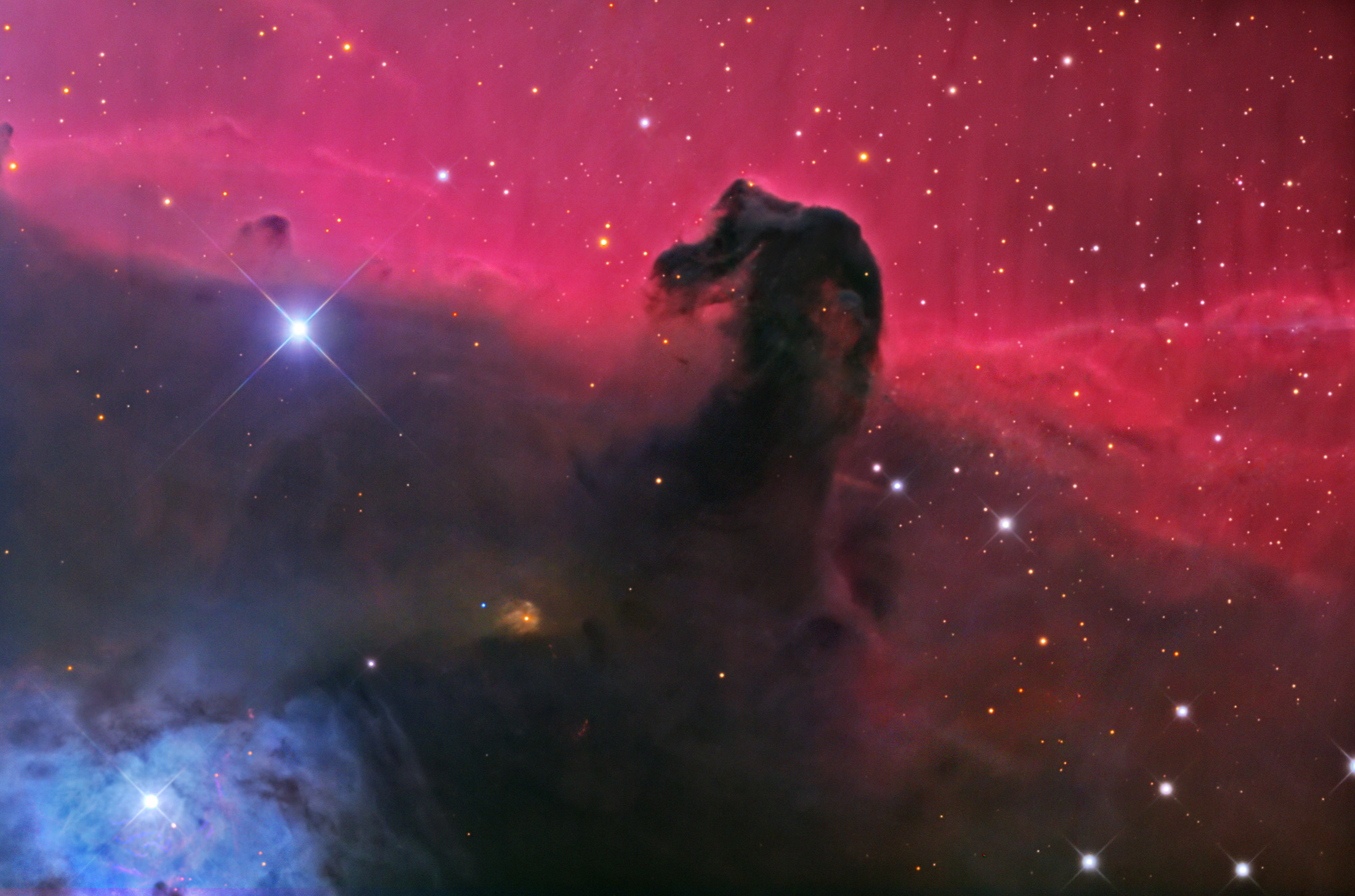
Image description: Among all these dark nebulae, located about 600 light-years away, the small pink Herbig Haro HH32 nebula can be distinguished (right above the center). Image source & Copyright: Adam Block, Mt. Lemmon SkyCenter, University of Arizona.
A dark nebula is a type of interstellar cloud so dense that it obscures the light emitted by background stars. However, some stars in the Milky Way manage to pierce the vast dark clouds that separate the plane of our galaxy. In all nebulae, dark clouds can be found, the most beautiful example being the Horsehead Nebula or the Serpent Nebula.
Dark clouds appear this way due to micrometer-sized dust particles, covered with carbon oxide and frozen nitrogen, which effectively block the passage of light in visible wavelengths. These clouds are rich in elements, including molecular hydrogen (H2), atomic helium (He), and ammonia (NH₃). Small isolated dark nebulae are called "Bok Globules".
Dark clouds are nurseries for stars and planets. They are fantastic pillars of absorbing dust and transparent gas, sculpted by the radiating winds of nearby stars.
Depending on the temperature and density of the cloud, the gas, mainly hydrogen, can be found in atomic, ionic, or molecular form. Thus, ordinary matter is primarily composed of ionized hydrogen (H+), atomic hydrogen (H1), molecular hydrogen (H2), and solid dust grains. Interstellar dust grains are actually simple assemblages of molecules that become increasingly complex until they reach dimensions of 0.1 µ (about 10,000 molecules).
N.B.: Molecular hydrogen (H2) is made up of two hydrogen atoms chemically bonded. Molecular clouds are interstellar nebulae whose density allows the formation of H2. The H2 molecule is not easily detectable, but scientists have a tracer that indicates the presence of molecular hydrogen in a cloud; this tracer is carbon monoxide (CO). Indeed, the ratio between the luminosity of CO and the mass of H2 is almost constant.

The Horsehead Nebula, located 1,350 light-years away, is a dark nebula situated in the constellation Orion. Behind the nebula is ionized hydrogen from the nearby bright star Sigma Orionis, giving it this magnificent red color. The darkness of the horse's head is caused by the presence of a dense cloud of gas and dust that strongly absorbs the visible radiation emitted by the background ionized gas (red in the photo).

The central band of the Milky Way is connected to Antares by a dark band of dust called the "Dark River," located about 500 light-years away. The opacity of the Dark River is due to the absorption of light from background stars by cosmic dust. Antares (in yellow) is surrounded by dust that forms a yellowish reflection nebula. Just above, the bright double star (in blue) Rho Ophiuchi is enveloped in a molecular cloud. The globular cluster (in red) M4 is visible just above to the right of Antares; it is much farther away than the other colored clouds (7,000 light-years).

The Pipe Nebula is a dark nebula in the constellation Ophiuchus. This cloud belongs to a larger complex nicknamed the Dark Horse Nebula. In the Pipe Nebula, two distinct features stand out, one representing the stem and the other the bowl of the Pipe. The opaque nebula drawn by the pipe's smoke is a cloud that absorbs the light from background stars in the Milky Way.